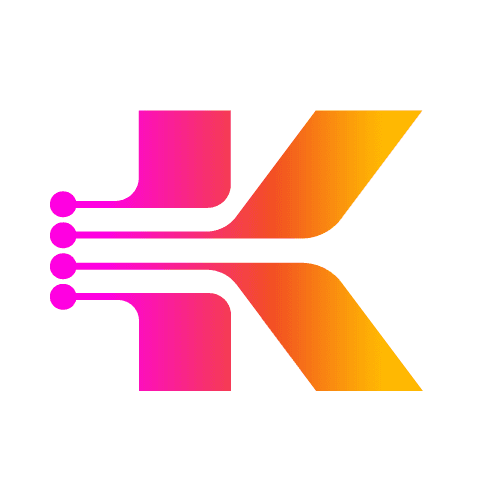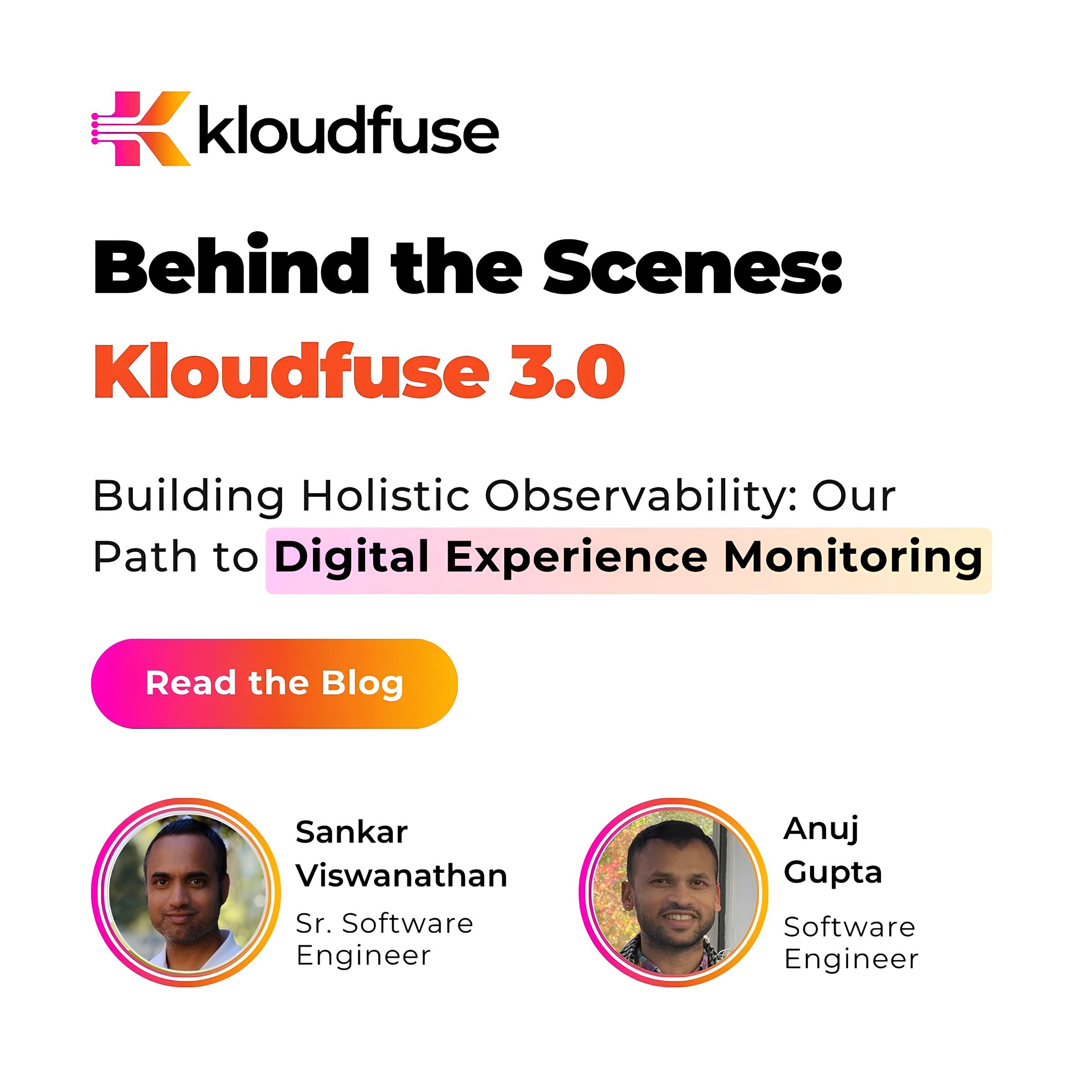Behind the Scenes: Building Digital Experience Monitoring

By
The Kloudfuse Team
Published on
Nov 6, 2024
Table of Contents
As we reflect on our journey over the past year, it’s incredible to see how far we’ve come in developing our Digital Experience Monitoring (DEM) which includes Real User Monitoring (RUM) and Session Replays. With different backgrounds and experiences, we have encountered unique challenges and rewarding moments during this time.
A Unified Solution
Kloudfuse unified observability has successfully integrated metrics, events, logs, and traces (MELT). You can navigate your way from application traces and service calls down to logs and infrastructure metrics.
As we grow our user base, our customers are increasingly looking for a unified solution that encompasses broader observability streams from a single vendor. By integrating both frontend and backend observability into our data lake, we now offer a holistic view of full-stack observability.
The Blind Spots in Frontend Observability
One significant insight we've uncovered is that customers frequently struggle with visibility into their frontend operations. They have countless questions about user behavior, including what experiences their users encounter and the workflows they navigate. Without insights into the frontend, these questions remain unanswered. This is a crucial facet of observability that we are committed to resolving.
The Use Cases of Frontend Observability and DEM
The use cases for frontend observability through Digital Experience Monitoring (DEM) are varied and extend well beyond traditional product analytics. While product analytics tools primarily serve product and marketing teams with targeted monitoring features, frontend observability provides a more comprehensive view. It connects user interactions—such as where users are coming from and what actions they’re taking—with deeper insights into UI performance metrics such as time to first byte, page load times, and action durations. This holistic approach integrates these metrics with the underlying infrastructure, making the insights valuable across multiple teams and roles.
For support teams, this real-time insights allow them to see exactly what a user is experiencing during a support call. From a product analytics standpoint, stakeholders can track user journeys, identifying the pages users visit and where they encounter friction in real time. For engineering teams, insights into slow-loading pages provide visibility into resource usage, allowing them to optimize performance by adjusting resource allocations as needed.
The Complexity of RUM Analytics
One of the significant challenges we’ve encountered is the complexity of aggregating data across long-lived user sessions. Unlike logs and spans that are more self-contained, RUM requires us to observe data for extended interactions such as user sessions. We have built an effective query system crucial for aggregating these types of insights accurately.
Kloudfuse on Kloudfuse: Leveraging Our Own Product for Troubleshooting
The engineering team here uses Kloudfuse to enhance troubleshooting and accelerate MTTR. With this new capability, we can now correlate performance of frontend to backend services, enriching our observability purview. This holistic view not only improves our product but also enhances our understanding of user workflows.
What Has Been Most Rewarding About This Journey?
As we approach the release, it’s incredibly rewarding to see our initial set of trials starting using our product. Watching both customers and our internal teams engage with the platform is an exciting milestone.
Building A Product From 0 to 1: Sankar’s Perspective
I’ve transitioned from a backend-focused role to the challenge of building a product from the ground up, and this year-long journey has been eye-opening. Immersing myself in this project has me acutely aware of the complexities involved. While I’ve previously worked with tools like Prometheus, Grafana, and various homegrown solutions at Facebook, creating a complete observability platform and DEM product introduces an entirely new set of challenges. This has led me to reflect on what users should expect from such a tool—specifically, which features are essential and what aspects provide the most value.
A Full Stack Experience: Anuj’s Insights
Since joining Kloudfuse about six months ago, I initially focused on logs and the record-and-replay functionality for backend troubleshooting. Transitioning to RUM has provided me with a broader perspective on visibility across the entire stack. The fast-paced environment here, along with collaboration with UI teams, has deepened my understanding of user workflows.
Conclusion
As we continue to refine and expand our observability platform, we’re excited about the potential to make a meaningful impact on how businesses understand and improve user experiences. The journey may be challenging, but the rewards—both for us and our users—are what drive us forward. Here’s to building a better future for observability!


